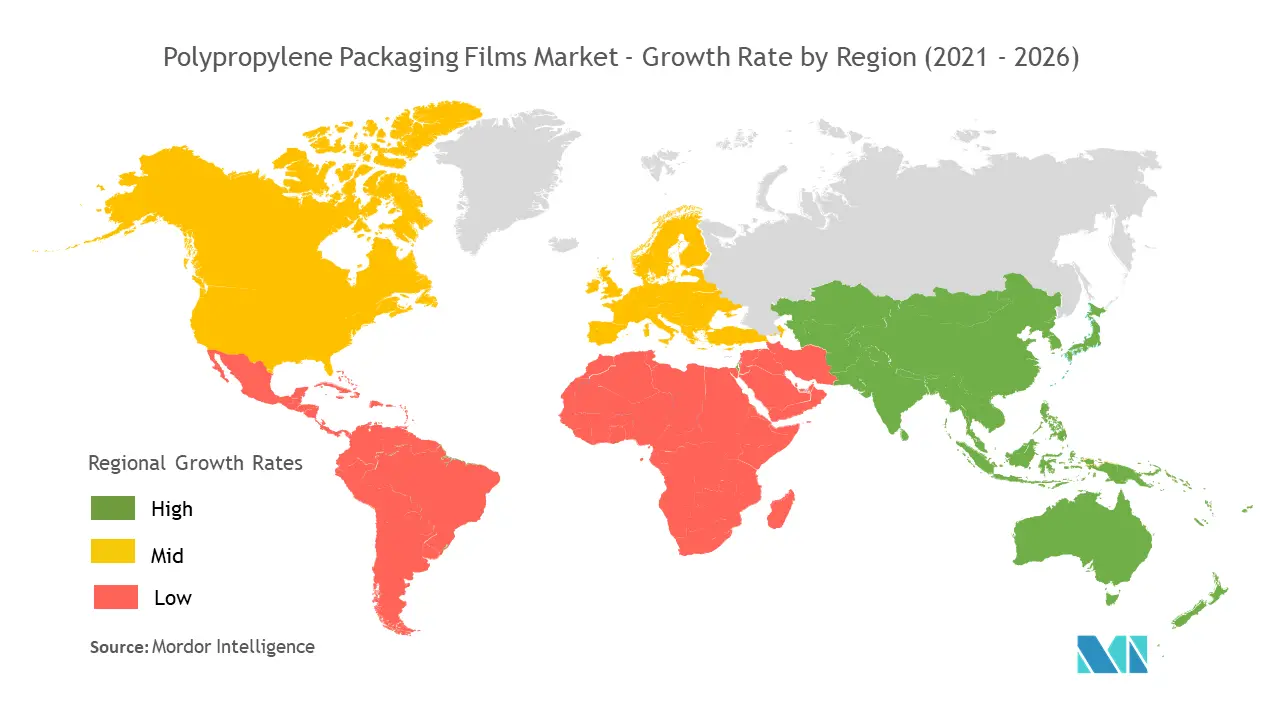Market Trends of Polypropylene Packaging Films Industry
This section covers the major market trends shaping the Polypropylene Packaging Films Market according to our research experts:
BOPP is One of the Factor Driving the Market
- When BOPP films are colored and combined with ordinary plastic bags, they appear beautiful and have a waterproof, moisture-resistant function. These bags have an excellent appearance and are used for packaging costlier products like seeds, pesticides, wheat flour, high-end chemicals, etc.
- Moreover, the BOPP bags are crystal clear polyethylene bags. Their bi-axial orientation gives them a transparent appearance, and this makes them suitable for branding via printing on their surfaces. BOPP bags are largely used for retail packaging. The biaxial orientation increases their strength, and hence they are preferable to carry greater loads. The BOPP bags are waterproof. The products inside them can be safeguarded against moisture for a much longer span of time.
- Due to stringent food packaging requirements, BOPP films have many suitable and advantageous properties for packing food materials. The package helps to protect the nutritional properties of the food until final consumption with the help of this film. These packs should have good optical properties and have excellent clarity, transparency, and gloss.
- Additionally, the application of barrier heat-resistant BOPP films is one of the primary trends observed in the food packaging market, where the moisture and oxygen barrier is of utmost importance. This film allows both printing and barrier functionalities, which enable its construction with even two-ply laminates.
- In July 2021, Cosmo Films, a global vendor in specialty films for flexible packaging, labeling, and lamination applications as well as synthetic paper, re-launches BOPP based Direct Thermal Printable (DTP) Top Coated Film, with a proprietary coating that enables the formation of an image or impression on the film upon contact with the heated print head of a thermal printer. A film specially designed for niche applications like information labeling (airport baggage tags), inventory tracking, frozen food labeling, and parking ticket applications can grow in many new applications.

Asia Pacific Holds the Largest Market Share
- China continues to be one of the significant markets for plastic packaging, and the legislative bans are expected to pose a challenge for the growth of the market. Similarly for India, according to the Ministry of the Economy and Finance, the plastic packaging market grossed USD 72.6 billion in fiscal 2020.
- The World Bank outlines that the COVID-19 pandemic has increased single-use disposable plastic adoption in the region due to hygiene concerns and low prices of virgin plastics. The pandemic has reversed age-old policies of tackling plastic pollution.
- Globally, South Asia has been identified as the least integrated region with restrictions on the movement of people, goods, services, and capital. However, various countries such as Afghanistan, Bangladesh, Bhutan, India, Maldives, Nepal, Pakistan, and Sri Lanka, have led the region in the control of marine plastic pollution.
- In July 2021, Defense Research and Development Organization (DRDO), in collaboration with Acharya Nagarjuna University and Ecolastic Private Limited, introduced environmentally-friendly packaging products made from natural and plant-based food-grade materials intended to eliminate single-use plastic. These bags are sustainable, cost-effective, and ocean-safe alternatives to single-use plastics, unlike traditional polyethylene bags created from petrochemicals, which are hazardous to the environment and take years to degrade.
- Following the introduction of regulation banning plastics waste imports in China, several players are strategizing to reduce plastic waste generation. Yum China Holdings Inc. announced in January 2021 that, in accordance with Chinese legislation, it had initiated a series of plastic reduction and ecologically friendly packaging activities across its brands. This involves using paper straws, paper bags, and biodegradable plastic bags to replace existing plastic packaging. Yum China anticipates a reduction of around 8,000 tons of non-degradable plastics yearly due to these activities beginning in 2021.


